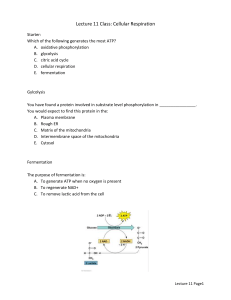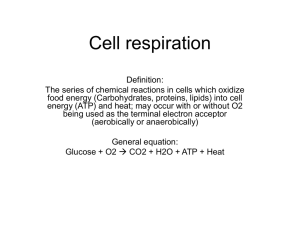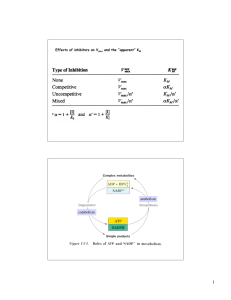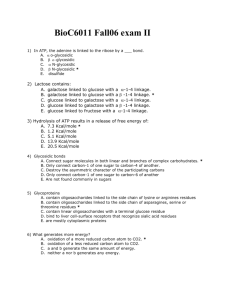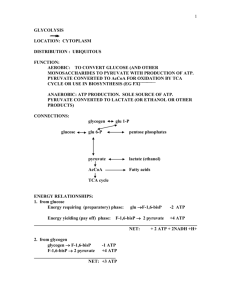TLW 7e Chapter 7 Answers
advertisement
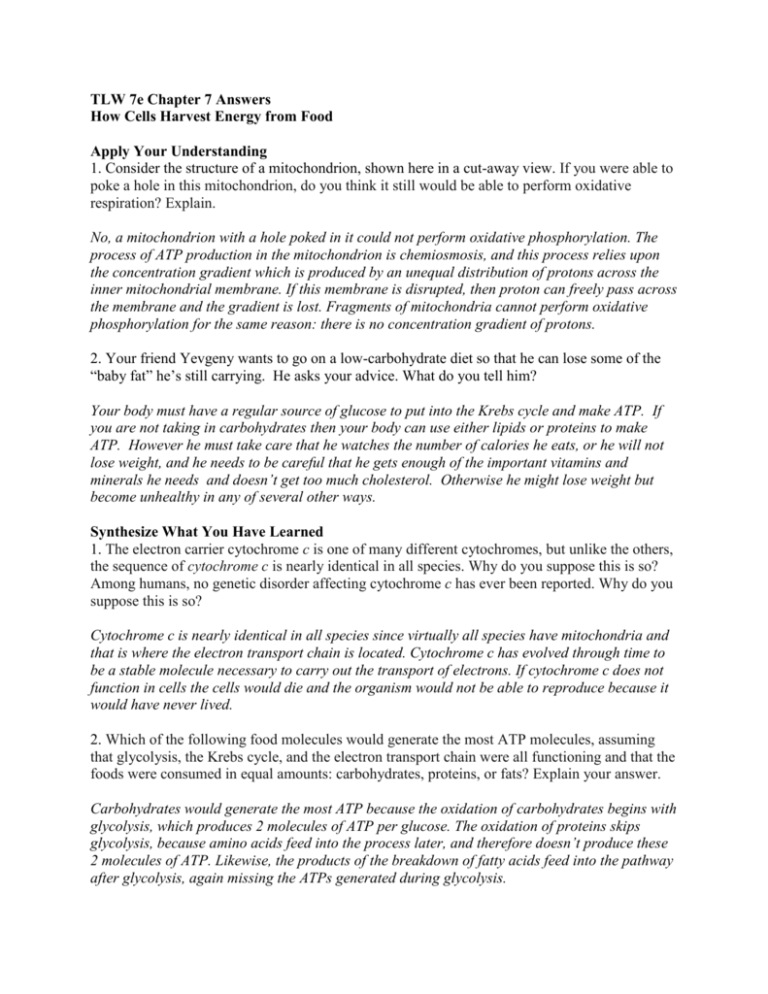
TLW 7e Chapter 7 Answers How Cells Harvest Energy from Food Apply Your Understanding 1. Consider the structure of a mitochondrion, shown here in a cut-away view. If you were able to poke a hole in this mitochondrion, do you think it still would be able to perform oxidative respiration? Explain. No, a mitochondrion with a hole poked in it could not perform oxidative phosphorylation. The process of ATP production in the mitochondrion is chemiosmosis, and this process relies upon the concentration gradient which is produced by an unequal distribution of protons across the inner mitochondrial membrane. If this membrane is disrupted, then proton can freely pass across the membrane and the gradient is lost. Fragments of mitochondria cannot perform oxidative phosphorylation for the same reason: there is no concentration gradient of protons. 2. Your friend Yevgeny wants to go on a low-carbohydrate diet so that he can lose some of the “baby fat” he’s still carrying. He asks your advice. What do you tell him? Your body must have a regular source of glucose to put into the Krebs cycle and make ATP. If you are not taking in carbohydrates then your body can use either lipids or proteins to make ATP. However he must take care that he watches the number of calories he eats, or he will not lose weight, and he needs to be careful that he gets enough of the important vitamins and minerals he needs and doesn’t get too much cholesterol. Otherwise he might lose weight but become unhealthy in any of several other ways. Synthesize What You Have Learned 1. The electron carrier cytochrome c is one of many different cytochromes, but unlike the others, the sequence of cytochrome c is nearly identical in all species. Why do you suppose this is so? Among humans, no genetic disorder affecting cytochrome c has ever been reported. Why do you suppose this is so? Cytochrome c is nearly identical in all species since virtually all species have mitochondria and that is where the electron transport chain is located. Cytochrome c has evolved through time to be a stable molecule necessary to carry out the transport of electrons. If cytochrome c does not function in cells the cells would die and the organism would not be able to reproduce because it would have never lived. 2. Which of the following food molecules would generate the most ATP molecules, assuming that glycolysis, the Krebs cycle, and the electron transport chain were all functioning and that the foods were consumed in equal amounts: carbohydrates, proteins, or fats? Explain your answer. Carbohydrates would generate the most ATP because the oxidation of carbohydrates begins with glycolysis, which produces 2 molecules of ATP per glucose. The oxidation of proteins skips glycolysis, because amino acids feed into the process later, and therefore doesn’t produce these 2 molecules of ATP. Likewise, the products of the breakdown of fatty acids feed into the pathway after glycolysis, again missing the ATPs generated during glycolysis. 3. How much ATP would be generated in the cells of a person who consumed a diet of pyruvate instead of glucose? (Use one molecule of each for your calculation?) Assuming that no glucose was available and cells could only utilize pyruvate, for each pyruvate molecule taken in a cell would produce 17 ATP when oxygen is present. To break it down, in the bridge step (conversion of pyruvate to acetyl coA) one NADH2 is produced. In the citric acid cycle, 3 NADH2 and 1 FADH2 are produced, and one ATP by direct phosphorylation. Each NADH2 is used to make 3 ATP, so 3 times four is twelve ATP. Each FADH2 can be used to make two ATP, so two times two is four. This gives a total of 17 ATP per pyruvate molecule. 4. Soft drinks are artificially carbonated, causing them to fizz. Beer and sparkling wines are naturally carbonated. How does this natural carbonation occur? Beer and sparkling wines are fermented. In that process, yeast uses the sugars in grains and fruits to produce ATP. The yeasts take in glucose and then through the process of glycolysis, they produce ATP and pyruvate. The pyruvate then is fermented to ethanol and carbon dioxide. The carbon dioxide produces the natural carbonation.


